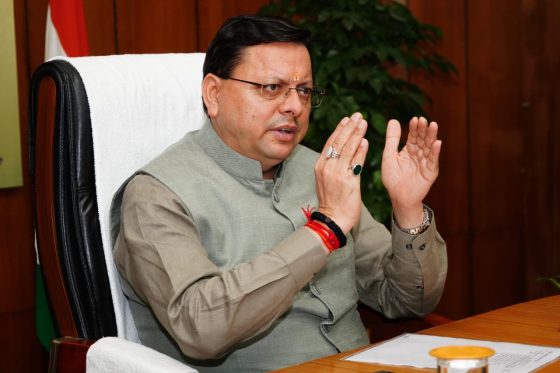Uttarakhand is known for the famous Chipko movement throughout the world. It has acted like a beacon of hope for environment conservation and inspired conservation efforts across the globe down the decades.
March 26 is a landmark day in the history of this hill region which brought it on the global environment conservation map. In fact, it was on this day, forty three years ago, when people around the world came to know of a unique environment protection an initiative. It has also inspired many an effort at ecological conservation in Uttarakhand over the years . The movement is even more relevant today for a world facing global warming and climate change . The need for protecting our forests is more urgent now. This movement has been successful in bringing about legislation to protect the Himalayas against contract felling by non-violent means. It remains a tremendous inspiration to grassroots environmental movements in other parts of India and around the world. The “chipko women”, all those years ago, showed their commitment and responsibility towards the future of their own people and nature!
On this day in 1974, 27 women and girls from Reni village saved their communal forest from clear felling .They were led by Gaura Devi and their action began a decade of “Chipko” actions by women throughout this hill region. The world-famous “Chipko” movement took place in the Lata and Reni villages in the vicinity of the Nanda Devi Biosphere Reserve . Villages of the Niti Valley celebrate the anniversary of the Chipko Movement every year. They hold a mass meeting in Lata village,Gaura Devi’s ancestral home before proceeding to Reni village,Gaura Devi’s adopted home, for a mass rally. The Chipko movement represents a milestone both globally and locally. The women of Chipko showed us that social and ecological justice go hand in hand. Their peaceful demonstrations fostered a sense of conservation that still exists today in the villages of the Niti valley.
Gaura Devi led the first all-women action to save their community forest and mobilised the women of this region to protect their natural heritage.During the activist phase of Chipko in the 1970s ,the courage and vigilance of Uttarakhandi women saved may forests and earned them a hallowed place in the history of the global environmental movement.
Standing in front of the trees that had been marked for felling, Gaura Devi addressed the men: “Brothers! This forest is the source of our livelihood. If you destroy it, the mountain will come tumbling down onto our village.” She then placed herself in front of a gun brandished by one of the men. “This forest nurtures us like a mother; you will only be able to use your axes on it if you shoot me first.” Initially met with abuse and threats, the women refused to move out of the way of the lumbermen. Composed of mountain farmers from Himachal Pradesh who understood only too well what Gaura Devi was talking about, the lumbermen quickly lost heart. After a three day stand off, they finally withdrew without having accomplished their task.
From this action, Chipko was to emerge as a peasant movement in defence of traditional forest rights, continuing a century-long tradition of resistance to state encroachment.”After Reni, in 1975, the women of Gopeshwar, in 1978, of Bhyudar Valley (threshold of Valley of Flowers), of Dongari-Paitoli in 1980, took the lead in protecting their forests. In Dongari and Paitoli, the women opposed their men’s decision to give a 60 acre Oak forest to construct a horticulture farm. They also demanded their right to be associated in the management of the forest. Their plea was that it is the woman who collects fuel, fodder and water. The question of the forest is a life and death question for her. Hence, she should have a say in any decision about the forest. Now they are not only active in protecting the forests but are also in afforesting the bare hill-slopes.
The Chipko Movement had led to the emergence of a series of environmental groups and movements across the country, making the people aware of the need to conserve the environment and biodiversity.
In July 1991, at the age of 66, Gaura Devi died quietly in the mountain village of Reni. Her story has been told to children in the hill region down the years.She is almost seen as a modern day “Jhansi ki Rani” whose bravery in the face of odds, despite being an illiterate woman, has become legendary as far as environment conservation goes.
 Dainik Nation News Portal
Dainik Nation News Portal




